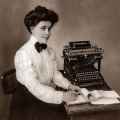
Ruth Elizabeth Stiff
Joined August 2020
0 stories
Bio
I love all things Earthy and Self-Help
History is one of my favourite subjects and I love to write short fiction
Research is so interesting for me too
Stories (438/0)
Subscribe to my stories
Show your support and receive all my stories in your feed.
Send me a tip
Show your support with a small one-off tip.















